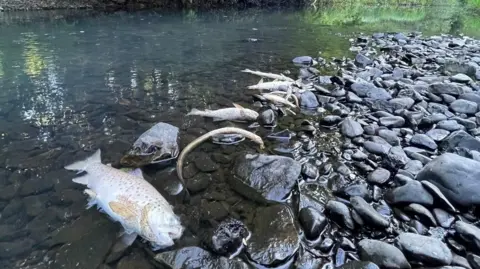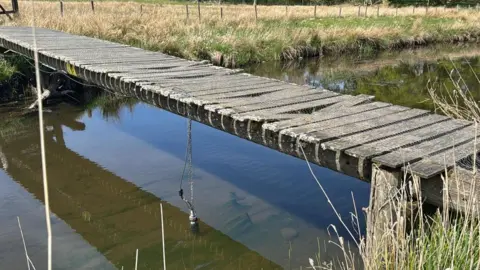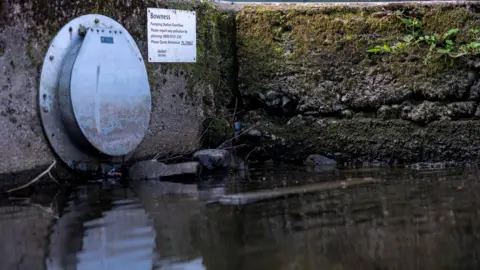Water quality monitors moved after activist tests
 Matt Staniek
Matt StaniekWater quality monitors near England's largest lake which were deemed ineffective by campaigners have now been moved.
The Environment Agency (EA) installed the monitors at Cunsey Beck, which feeds into Windermere in the Lake District, after a fish kill in June 2022 in which "100% of life" within the river was suspected to have died.
Earlier this year, Save Windermere campaigners claimed a test using non-toxic dye showed the equipment was wrongly placed and could not pick up flow coming from a nearby sewage pipe.
The EA said at the time it was "confident" the monitors had been placed correctly but last week it moved the equipment to where the campaigners had said would work better.
The monitors, known as sondes, are placed upstream and downstream of Near Sawrey Wastewater Treatment Works - managed by United Utilities - which discharges into Cunsey Beck.
 Save Windermere
Save WindermereMatt Staniek, a founder of Save Windermere, told the BBC in January that the group had placed fluorescent dye where sewage entered the beck and observed the dyed water not passing the sonde.
"This means any sewage spills from Near Sawrey - a prime suspect in the fish kill and the main cause for concern on Cunsey Beck - would go undetected by the EA's monitor," he added.
 Reuters
ReutersThe EA said at the time more information on how and when Save Windermere's test was carried out would be needed to determine its relevance.
It has now confirmed it reviewed the position of the sonde and had since moved it to the other side of the river just as Save Windermere had recommended, adding that it "welcomed" feedback.
It also said it had carried out its own dye test, which suggested this new position captured flow from the outfall effectively.
"This is yet another clear example of how Save Windermere is driving real, on-the-ground change," said Mr Staniek.
"It also raises serious questions about the reliability of historical data collected in the area."
